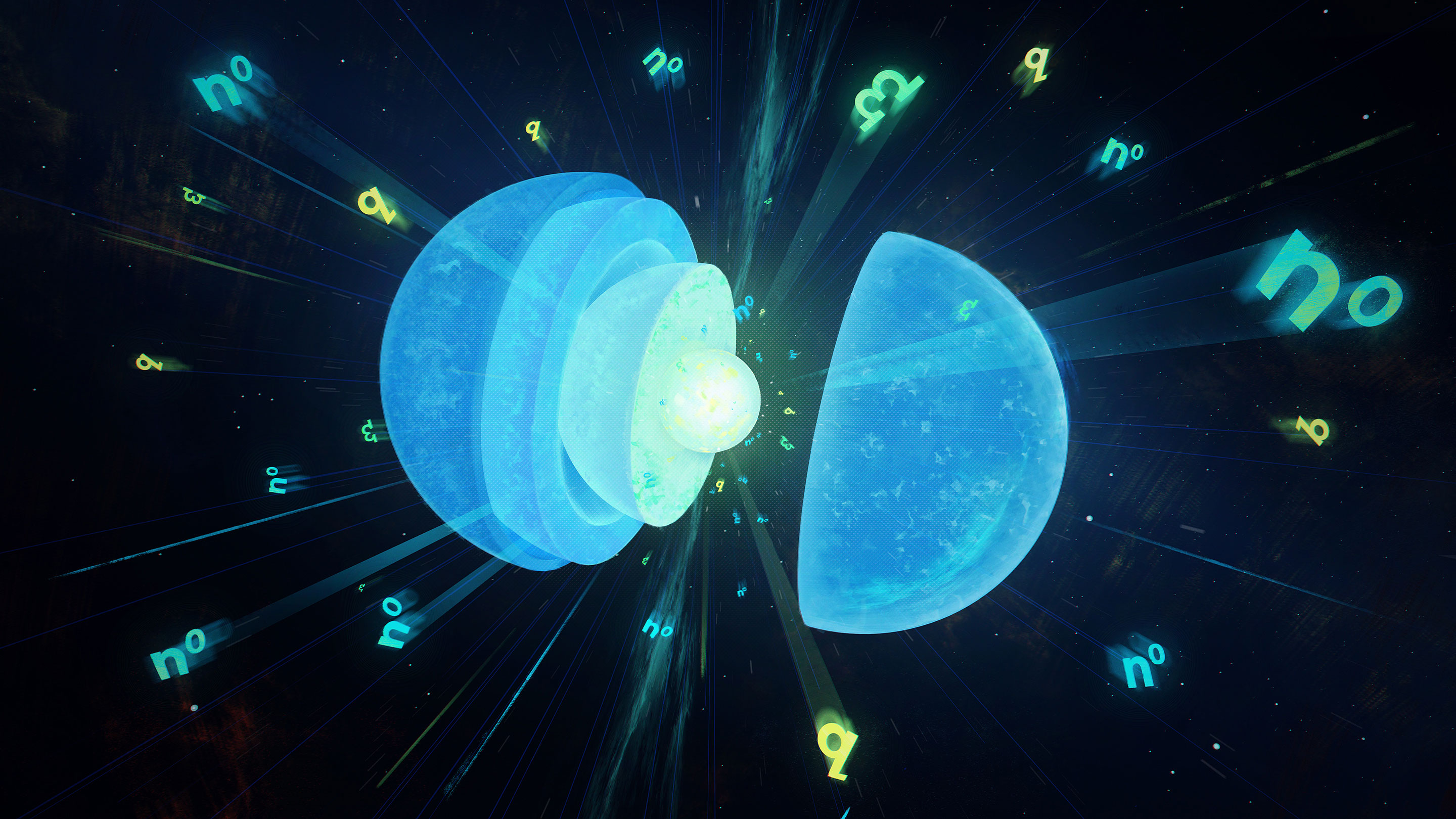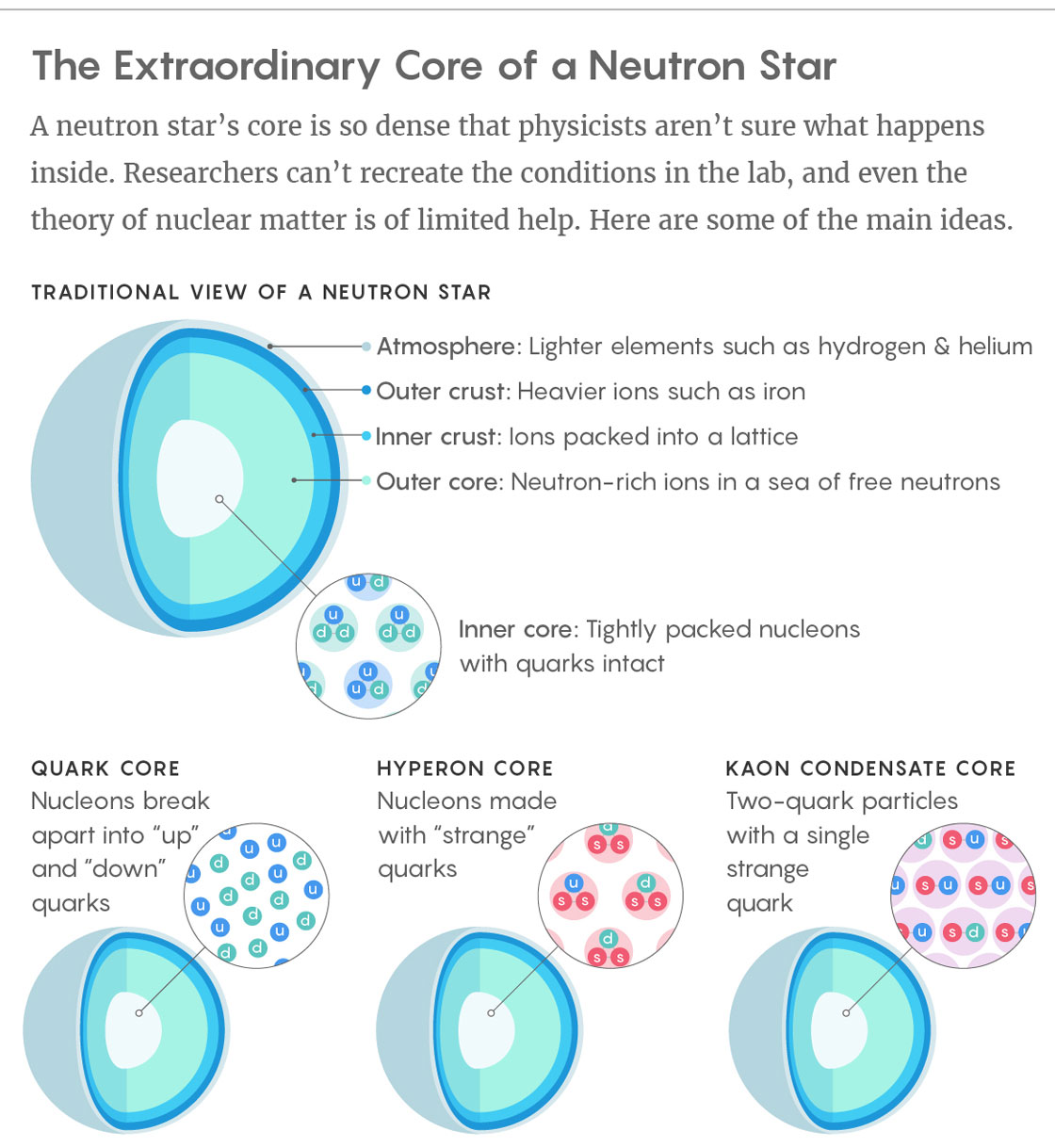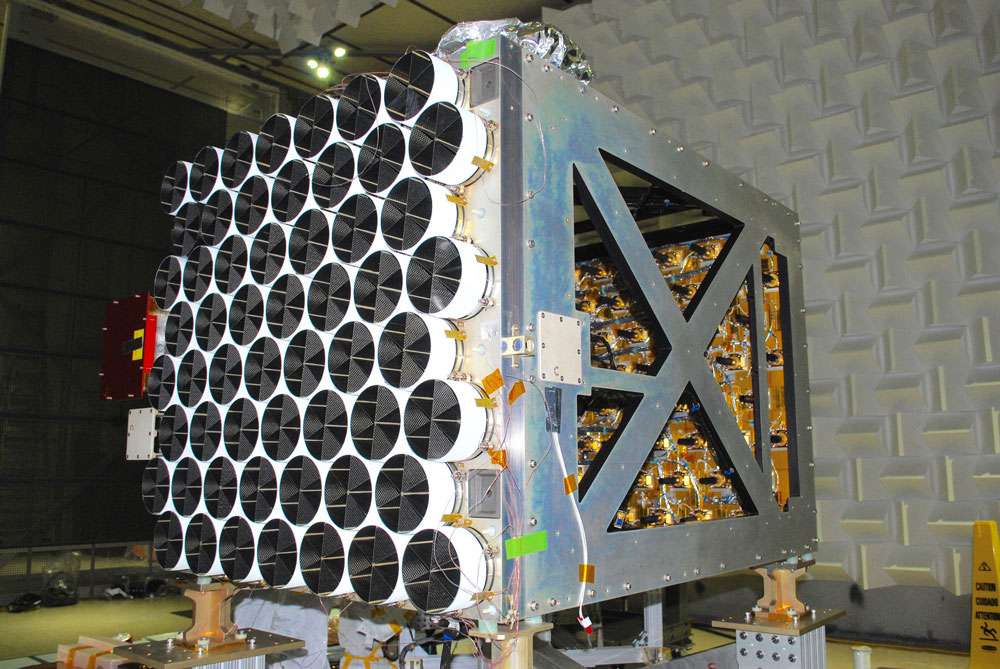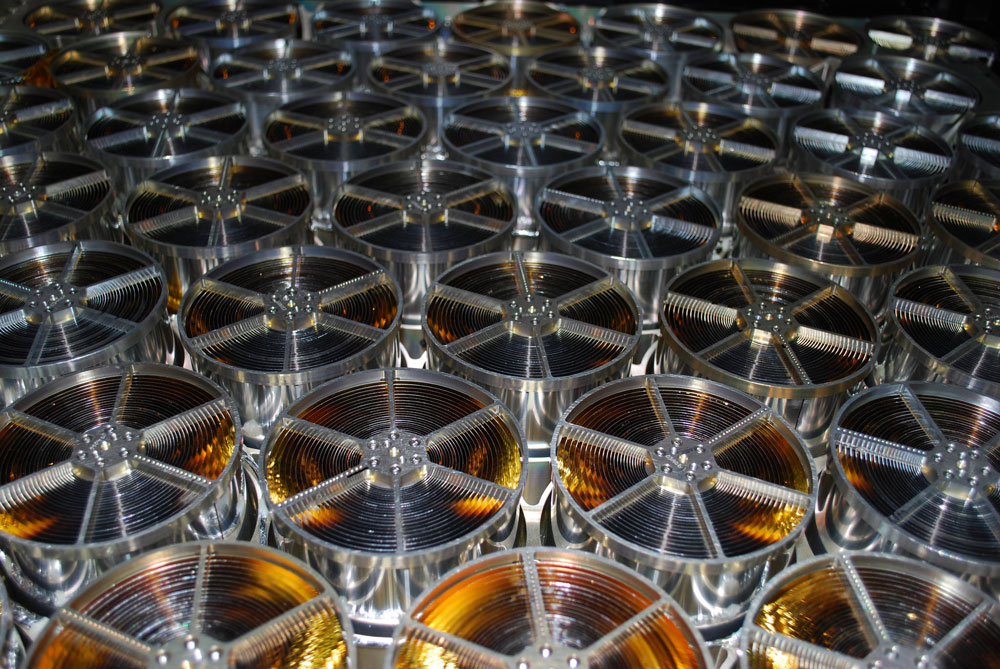Squishy or Solid? A Neutron Star’s Insides Open to Debate

Maciej Rebisz for Quanta Magazine
Introduction
The alerts started in the early morning of Aug. 17. Gravitational waves produced by the wreck of two neutron stars — dense cores of dead stars — had washed over Earth. The thousand-plus physicists of the Advanced Laser Interferometer Gravitational-Wave Observatory (LIGO) rushed to decode the space-time vibrations that rolled across the detectors like a drawn-out peal of thunder. Thousands of astronomers scrambled to witness the afterglow. But officially, all this activity was kept secret. The data had to be collected and analyzed, the papers written. The outside world wouldn’t know for two more months.
The strict ban put Jocelyn Read and Katerina Chatziioannou, two members of the LIGO collaboration, in a bit of an awkward situation. In the afternoon on the 17th, the two were scheduled to lead a panel at a conference dedicated to the question of what happens under the almost unfathomable conditions in a neutron star’s interior. Their panel’s topic? What a neutron-star merger would look like. “We sort of went off at the coffee break and sat around just staring at each other,” said Read, a professor at California State University, Fullerton. “OK, how are we going to do this?”
Physicists have spent decades debating whether or not neutron stars contain new forms of matter, created when the stars break down the familiar world of protons and neutrons into new interactions between quarks or other exotic particles. Answering this question would also illuminate astronomical mysteries surrounding supernovas and the production of the universe’s heavy elements, such as gold.
In addition to watching for collisions using LIGO, astrophysicists have been busy developing creative ways to probe neutron stars from the outside. The challenge is then to infer something about the hidden layers within. But this LIGO signal and those like it — emitted as two neutron stars pirouette around their center of mass, pull on each other like taffy, and finally smash together — offers a whole new handle on the problem.
Strange Matter
A neutron star is the compressed core of a massive star — the super dense cinders left over after a supernova. It has the mass of the sun, but squeezed into a space the width of a city. As such, neutron stars are the densest reservoirs of matter in the universe — the “last stuff on the line before a black hole,” said Mark Alford, a physicist at Washington University in St. Louis.
To drill into one would bring us to the edge of modern physics. A centimeter or two of normal atoms — iron and silicon, mostly — encrusts the surface like the shiny red veneer on the universe’s densest Gobstopper. Then the atoms squeeze so close together that they lose their electrons, which fall into a shared sea. Deeper, the protons inside nuclei start turning into neutrons, which cluster so close together that they start to overlap.

Lucy Reading-Ikkanda/Quanta Magazine; Source: Feryal Özel
But theorists argue about what happens farther in, when densities creep past two or three times higher than the density of a normal atomic nucleus. From the perspective of nuclear physics, neutron stars could just be protons and neutrons — collectively called nucleons — all the way in. “Everything can be explained by variations of nucleons,” said James Lattimer, an astrophysicist at Stony Brook University.
Other astrophysicists suspect otherwise. Nucleons aren’t elementary particles. They’re made up of three quarks. Under immense pressure, these quarks might form a new state of quark matter. “Nucleons are not billiard balls,” said David Blaschke, a physicist at the University of Wroclaw in Poland. “They are like cherries. So you can compress them a little bit, but at some point you smash them.”
But to some, the prospect of a quark jam like this is a relatively vanilla scenario. Theorists have long speculated that layers of other weird particles might arise inside a neutron star. As neutrons are jostled closer together, all that extra energy might go into creating heavier particles that contain not just the “up” and “down” quarks that exclusively make up protons and neutrons, but heavier and more exotic “strange” quarks.
For example, neutrons might be replaced by hyperons, three-quark particles that include at least one strange quark. Laboratory experiments can make hyperons, but they vanish almost immediately. Deep inside neutron stars, they might be stable for millions of years.
Alternatively, the hidden depths of neutron stars might be filled with kaons — also made with strange quarks — that collect into a single lump of matter sharing the same quantum state.
For decades, though, the field has been stuck. Theorists invent ideas about what might be going on inside neutron stars, but that environment is so extreme and unfamiliar that experiments here on Earth can’t reach the right conditions. At Brookhaven National Laboratory and CERN, for example, physicists smash together heavy nuclei like those of gold and lead. That creates a soupy state of matter made up of released quarks, known as a quark-gluon plasma. But this stuff is rarefied, not dense, and at billions or trillions of degrees, it’s far hotter than the inside of neutron star, which sits in the comparatively chilly millions.
Even the decades-old theory of quarks and nuclei — “quantum chromodynamics,” or QCD — can’t really provide answers. The computations needed to study QCD in relatively cold, dense environments are so devastatingly difficult that not even computers can calculate the results. Researchers are forced to resort to oversimplification and shortcuts.
The only other option is for astronomers to study neutron stars themselves. Unfortunately, neutron stars are distant, thus dim, and difficult to measure for anything but the very basic bulk properties. Even worse, the truly interesting physics is happening under the surface. “It’s a bit like there’s this lab that’s doing amazing things,” Alford said, “but all you’re allowed to do is see the light coming out of the window.”
With a new generation of experiments coming online, though, theorists might soon get their best look yet.


The NICER instrument, shown here before it was launched to the International Space Station, monitors the X-ray emissions of neutron stars.
NASA/Goddard/Keith Gendreau
Squishy or Hard?
Whatever might be inside the core of a neutron star — loose quarks, or kaon condensates, or hyperons, or just regular old nucleons — the material must be able to hold up to the crushing weight of more than a sun’s worth of gravity. Otherwise, the star would collapse into a black hole. But different materials will compress to different degrees when squeezed by gravity’s vise, determining how heavy the star can be at a given physical size.
Stuck on the outside, astronomers work backwards to figure out what neutron stars are made of. For this purpose, it helps to know how squishy or stiff they are when squeezed. And for that, astronomers need to measure the masses and radii of various neutron stars.
In terms of mass, the most easily weighed neutron stars are pulsars: neutron stars that rotate quickly, sweeping a radio beam across Earth with each spin. About 10 percent of the 2,500 known pulsars belong to binary systems. As these pulsars move with their partners, what should be a constant tick-tock of pulses hitting Earth will vary, betraying the pulsar’s motion and its location in its orbit. And from the orbit, astronomers can use Kepler’s laws and the additional rules imposed by Einstein’s general relativity to solve for the masses of the pair.
So far, the biggest breakthrough has been the discovery of surprisingly hefty neutron stars. In 2010, a team led by Scott Ransom at the National Radio Astronomy Observatory in Virginia announced that they had measured a pulsar weighing about two solar masses — making it far bigger than any previously seen. Some people doubted whether such a neutron star could exist; that it does has had immense consequences for our understanding of how nuclei behave. “Now it’s like the most cited observational pulsar paper ever, because of the nuclear physicists,” Ransom said.
According to some neutron-star models, which hold that gravity should strongly compress neutron stars, an object at that mass should collapse all the way into a black hole. That would be bad news for kaon condensates, which would be especially squishy, and it bodes poorly for some versions of quark matter and hyperons that would also compress too much. The measurement has been confirmed with the discovery of another neutron star of two solar masses in 2013.
Radii are trickier. Astrophysicists like Feryal Özel at the University of Arizona have devised various tricks to calculate the physical size of neutron stars by observing the X-rays emitted at their surfaces. Here’s one way: You can look at the overall X-ray emission, use it to estimate the temperature of the surface, and then figure out how big the neutron star needs to be to emit the observed light (correcting for how the light bends through space-time warped by gravity). Or you can look for hot spots on the neutron star’s surface that spin in and out of view. The neutron star’s strong gravitational field will modify the pulses of light from these hot spots. And once you understand the star’s gravitational field, you can reconstruct its mass and radius.
Taken at face value, these X-ray measurements suggest that even though neutron stars can be heavy, they are on the small end of predictions: only about 20 to 22 kilometers wide, according to Özel.
Accepting that neutron stars are both small and massive “kind of locks you in, in a good way,” Özel said. Neutron stars stuffed with interacting quarks would look like this, she said, while neutron stars made up of only nucleons would have larger radii.
But Lattimer, among other critics, has reservations about the assumptions that go into the X-ray measurements, which he calls flawed. He thinks they make the radii look smaller they really are.
Both sides expect that a resolution to the dispute will soon arrive. This past June, SpaceX’s 11th resupply mission to the International Space Station brought with it a 372-kilogram box containing an X-ray telescope called the Neutron Star Interior Composition Explorer (NICER). Now taking data, NICER is designed to find the size of neutron stars by watching for hot spots on their surfaces. The experiment should produce better radii measurements of neutron stars, including pulsars that have already had their masses measured.
“We look so much forward to it,” Blaschke said. A well-measured mass and radius for even a single neutron star would knock out many possible theories of their interior structure, keeping in play only the ones that could produce that particular combination of size and weight.
And now, finally chiming in, there’s LIGO.
As a first pass, the signal that Read huddled over coffee to discuss on Aug. 17 had been processed as if it were a merger of two black holes, not two neutron stars. This wasn’t unreasonable. LIGO’s previous signals had all come from black holes, which are more tractable beasts from a computational standpoint. But this signal involved lighter objects and went on for much longer than the black hole mergers. “It’s immediately obvious that this was not the same kind of system that we were practiced on,” Read said.
When two black holes spiral together, they bleed orbital energy into space-time as gravitational waves. But in the final second or so of the new 90-second-long LIGO signal, each object did something black holes don’t do: It deformed. The pair started to stretch and squeeze each other’s matter, generating tides that stole energy from their orbits. This drove them to collide faster than they would have otherwise.
After a frantic few months of running computer simulations, Read’s group inside LIGO has released their first measurement of the effect of those tides on the signal. So far, the team can set only an upper limit — meaning the tides have a weak or even unnoticeable effect. In turn, that means that neutron stars are physically small, with their matter held very tightly around their centers and thus more resistant to getting yanked by tides. “I think the first gravitational-wave measurement is in a sense really kind of confirming the kinds of things that X-ray observations have been saying,” Read said. But this isn’t the last word. She expects that more sophisticated modeling of the same signal will yield a more precise estimate.
With NICER and LIGO both offering new ways to look at neutron-star stuff, many experts are optimistic that the next few years will provide unambiguous answers to the question of how the material stands up to gravity. But theorists like Alford caution that measuring neutron-star matter’s squishiness alone won’t fully reveal what it is.
Perhaps other signatures can say more. Ongoing observations of the rate at which neutron stars cool, for example, should let astrophysicists speculate about the particles inside them and their ability to radiate away energy. Or observations of how their spins slow over time could help determine the viscosity of their insides.
Ultimately, just knowing when dense matter changes phase and what it changes into is a worthy goal, Alford argues. “Mapping the properties of matter under different conditions,” he said, “kind of is physics.
This article was reprinted on Wired.com.



